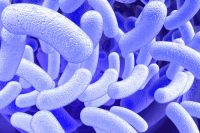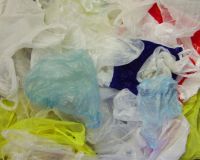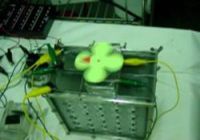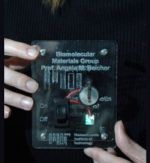
Recently, researchers in China have investigated an enzyme from the bacterium bacillus cereus DQ01 that has the capability to absorb hydrocarbon n-hexadecane. The bacterium was secluded from the Daqing oil field in Northeast China, where it has developed the ability to metabolize this chemical. Bioremediation of the hydrocarbon involves the use of the cultural bacterium that can be fed on the specific contamination. The microbes are cultivated in the presence of sugar or other standards in conjunction with a small quantity of pollutant material. Until the growth is optimized for digestion, successive generations are fed. These optimized microbes are applied to the contamination site or spill in a controlled manner to digest the pollutant material until no pollutant remains. The end products produced are non-toxic carbon dioxide, water and some mineralized matter.
Eco-friendly microbes
Microbes such as bacteria, virus and archaea are practically invisible to the naked eye and are considered environmentally-friendly organisms. They are used in food, water treatment, science, warfare and energy.

• Turns organic waste into eco-friendly plastic: In earlier times, it was a usual practice to convert the discarded organic material from agriculture, industries and households into bio-gas. Van Loosdrecht has been working on using bacteria to convert the waste into bioplastics, which is known as polyhydroxyalkanoates (PHAs). The PHAs are formed by the bacterial fermentation of sugar and lipids (fats). Due to its higher cost of production, they are limited to a wide range of applications. To overcome this, Van Loosdrecht has developed a new technology of wastewater treatment system, which uses the microbial culture to convert organic wastes to PHAs. The new process produces the same PHAs but is three times faster than the existing ones.

• Yields ethanol and eco-friendly glue: For the scientists to grasp more ethanol from cellulose and to use expensive enzymes to convert rigid plant cell walls into fuel is a haughty goal. Paul Weimer, who works at the US Dairy Forage Research Center, has found a new method of producing ethanol, which is much cheaper than the existing process. For a standard cellulosic ethanol production, it requires two reactors, enzymes and yeast, but with the help of the new approach, it uses only one reactor and a single microbe to create its own enzymes. The bio-adhesive was found during the conversion of plant fiber ethanol. The bacteria was attached to the fiber with such firmness that the only solution left was to break the bond by destroying the microbes and their sticky adhesive. The new bioadhesive replaced 70% of the petroleum-based phenol formaldehyde, which is used to manufacture plywood and other pressed-wood products.

• Convert carbon dioxide into methane: A team of scientists, led by Dr. Bruce Logan of Penn State University, has discovered a new species of bacteria known as Methanobacterium palustre, which has the potential to convert CO2 into methane. This means that carbon emissions can be stored in a huge container, which can be converted into methane and can meet the world’s energy demands by generating electricity.

• Virus-powered battery: The newly developed virus-powered batteries are two times more efficient then the conventional ones and in the future can power your gadgets and car too.

